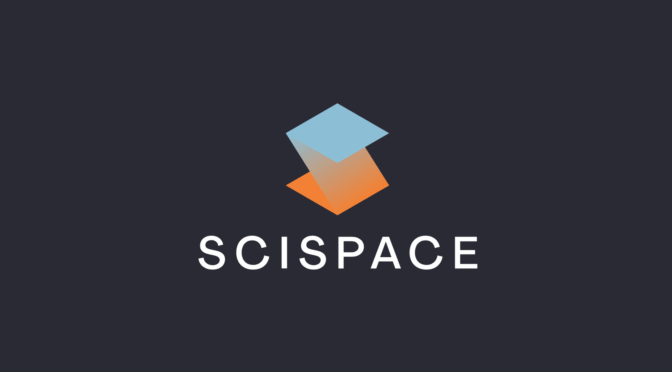SciSpace AI College Research Project Activity
AI-powered tools like SciSpace, Elicit, and ExplainPaper are making it much easier to discover academic research and engage with it in ways that I could only have dreamed of back in graduate school. While these tools can benefit any researcher, they may be particularly helpful to undergraduates who are developing their familiarity with discovering and making sense of research studies.
In this post, we explore SciSpace, a tool that can help when:
- Searching for academic research
- Reading and making sense of academic research
- Developing new research project ideas
- Writing literature reviews
I share two videos I recorder for my undergraduate students to serve as a quick-start guide for using SciSpace. I also provide an activity that asks students to use the “chat with a PDF” feature of SciSpace. While I use these videos and activity for my applied research class, Media & Audience Analytics, I am also incorporating them into other classes where students are dealing with academic research and writing papers.
Using SciSpace’s Chat with a PDF Feature
The first video offers an introduction to SciSpace’s Chat with a PDF tool, which allows users to interact with a PDF copy of a research study. Students can obtain summaries of sections of a paper, identify key takeaways in the paper, and get clear descriptions of esoteric or complex academic writing.
In the video, I reference an activity. Below the video is a copy that activity. It asks students to upload a PDF into SciSpace after creating a free account. They then interact with the PDF in SciSpace to answer a few questions as a way to get familiar with the Chat with a PDF feature.
The research article used in the activity sheet below is a study that I co-authored and that is publicly available. However, I encourage you to modify the activity questions, using a research study that is relevant to your class.
If the embedded view doesn’t load below, please see load activity in another browser.
Discover Research for a College Research Project with SciSpace
The second video is a jump around of a number of features within SciSpace that can help users begin to develop an understanding of the existing research in a particular area of study.
SciSpace has a number of tools, such as ‘Literature Review,’ AI agent’ and ‘Find Topic Topic’; features that appear to have some overlap. Each of these tools respond in their own way to a user’s query with summaries and research sources. The platform can generate follow up questions that a user can explore to delve into their research topic. These summaries are great for quickly familiarizing oneself with a body of research and allowing the user to begin thinking about possible gaps in the research.
The tool I like the most is the literature review feature. This feature offers a table with a list of research studies relevant to the user’s search query. It’s easy to view and allows users the ability to quickly compare and contrast studies. Users can add columns to the table to further explore a variety of dimensions including the study’s limitations as well as its objectives, contributions, and practical implications.
While SciSpace has some clear efficiency benefits for any researcher, I do find these tools a little frustrating. One can quickly become over-run by the information that SciSpace can provide with the click of a button. I find myself experiencing knowledge FOMO. I want to keep clicking for more and more. I open new tabs to follow new lines of thought. Stopping and digesting what’s available would be much less overwhelming and probably more productive for me.
Perhaps, then, it is a good thing that a free SciSpace account comes with limits. Each user has a set of coins that they spend each time they use an AI search tool, with deep analysis providing better results but costing more coins. The downside is that free users only get 100 credits per month. So use your free credits wisely. As you’ll see in the video above, I quickly ran out of coins (Note that I had used quite a few of my the month’s credits before making that video).
Additional AI Research Resources
The Georgetown University Library has curated a great list of AI research tools.
Closing Thoughts
I hope you found this post helpful in thinking about ways that you could incorporate SciSpace into your students’ research projects.
While I chose SciSpace because I personally found its outputs to be more user-friendly, the features I cover in the videos below may be similar to those available on platforms.
If you find this post interesting, you may wish to read My AI Classroom policy.
Be well!
-Matt

![Google Analytics 4 Assignment in the Communication Research Class [Updated]](https://mattkushin.com/wp-content/uploads/2024/01/Google-Analytics-4-assignment-672x372.webp)

